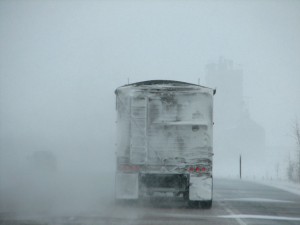Tips for Driving Under Bad Weather Conditions
 From time to time, residents of the Los Angeles area may encounter bad weather when driving. Because many drivers don’t actually spend time learning how to drive under bad weather conditions, accidents happen that could otherwise be prevented. Therefore it is important to take the time to know what to do when the weather is bad and you get behind the wheel.
From time to time, residents of the Los Angeles area may encounter bad weather when driving. Because many drivers don’t actually spend time learning how to drive under bad weather conditions, accidents happen that could otherwise be prevented. Therefore it is important to take the time to know what to do when the weather is bad and you get behind the wheel.
The following tips for driving under bad weather conditions should give you valuable information that you can use to keep yourself, and those who get into a vehicle with you, safe.
Always Be Prepared
Because the type of bad weather you may encounter varies, you should always carry certain things in your vehicle. For example, you may wish to keep a rain coat, an umbrella, an extra pair of gloves etc. in the trunk. (You never know when you may have to change a tire in a torrential downpour!) Always keep a flashlight (again…what if you need to change a tire in the middle of the night out on some lonesome highway?) Keep your gas tank above the halfway mark (it lessens the risk that you could accidentally run out of gas), carry a windshield scraper, and jumper cables. Make sure you have the correct tire iron for your car, a jack, and a properly inflated spare tire. Additionally, if winter is coming on, you should have a qualified mechanic inspect your car just to be sure things are ok. If there are problems, you can get them fixed before cold weather, snow, and ice hit. By being prepared, you can save yourself from having your vehicle break down when bad weather hits.
Be Cautious in Bad Weather
When bad weather hits, whether that’s a massive rainstorm, a snowstorm, or there’s ice on the road, it pays to slow down. Driving at a reduced speed can increase the chances that you’ll have time to react in the event of a possible accident. Additionally, if you slow down and keep space in between you and other vehicles on the road, if they slam on their brakes, you’ll be less likely to plow into the back of them. If the roads are slippery, you should not only drive slower than you usually do, you should also apply the brakes lightly. Stomping on the brakes can sometimes cause the brakes to lock up, which in turn may cause your vehicle to skid. This can be dangerous. Some vehicles have an anti-lock system on their brakes. If this is the case, you should step on the brakes early if you believe you need to stop “now.” You may be able to steer around an obstacle in your path, including another vehicle that has come to a sudden stop in front of you. Finally, obey all road lights and signs.




![Auto Towing Expert Los Angeles Car Towing Any Time, Any Day! Looking to tow vehicles in or around Los Angeles? With well maintained flatbed tow trucks, tow dollies, and a staff of […]](https://los-angeles-towing.com/wp-content/uploads/2010/hawk3.jpg)
![Car Lockout Locked out of your car? Hawk Towing Los Angeles can help! Have you ever lost car keys? Have you ever locked your keys in the car? It is also possible […]](https://los-angeles-towing.com/wp-content/uploads/2010/hawk4.jpg)
![Emergency Towing Expert & Responsive 24 Hour Emergency Towing in Los Angeles! Hawk Towing Los Angeles is well equipped and staffed to provide 24 hour towing emergency services. Call us anytime at […]](https://los-angeles-towing.com/wp-content/uploads/2010/hawk5.jpg)
